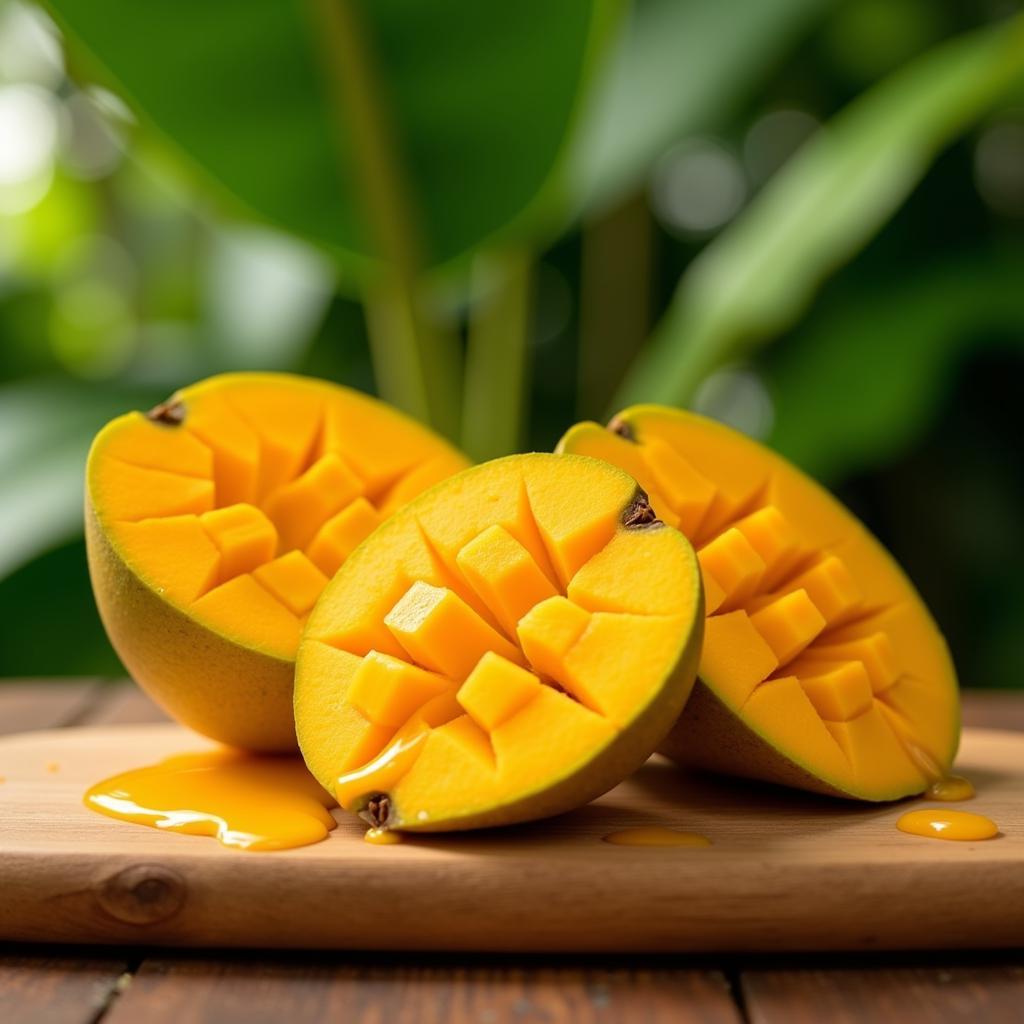The concept of “Perfume Food” might initially seem perplexing. Does it refer to food that smells like perfume, or perhaps perfume designed to smell like food? In reality, it encompasses a much broader and more fascinating culinary landscape. Let’s delve into the sensory experience of perfume food, exploring how aroma influences our perception of taste and transforms ordinary meals into extraordinary culinary adventures. See how Mina Cones, experts in food presentation, elevates the dining experience with their display food trays.
The Art of Scent and Flavor
Aroma plays a crucial role in how we perceive flavor. While our taste buds detect basic tastes like sweet, salty, sour, bitter, and umami, it’s the volatile aromatic compounds released by food that create the complex and nuanced flavors we experience. These compounds travel through the nasal passages to olfactory receptors, triggering a cascade of sensory signals that interact with taste perception in the brain. Think of the rich, earthy scent of truffles, the bright citrus notes of lemon zest, or the warm, inviting aroma of freshly baked bread. These scents not only enhance our enjoyment of food but also evoke memories and emotions.
Imagine biting into a juicy ripe mango. The sweetness hits your tongue first, but it’s the fragrant tropical aroma that truly defines the mango experience. This interplay of scent and flavor is at the heart of “perfume food.”
 Ripe Mango Exuding Tropical Aroma, a Prime Example of Perfume Food
Ripe Mango Exuding Tropical Aroma, a Prime Example of Perfume Food
Culinary Techniques for Enhancing Aroma
Chefs and home cooks alike employ various techniques to maximize the aromatic potential of their creations. These methods range from simple techniques like toasting spices to more complex processes like molecular gastronomy. Using high-quality ingredients is essential, as the inherent aromas of fresh produce, herbs, and spices form the foundation of a fragrant dish.
One technique is blooming spices in hot oil or butter to release their volatile oils. This process intensifies the aroma and adds depth of flavor to dishes. Another method involves using aromatic herbs like basil, mint, or cilantro as garnishes to infuse the dish with their fresh, vibrant scents.
From fine tropical foods to everyday meals, the principles remain the same.
The Psychology of Perfume Food
The connection between aroma and emotion is a powerful one. Certain scents can trigger vivid memories and evoke strong feelings of nostalgia, comfort, or even excitement. This psychological aspect of “perfume food” is what makes it so captivating. A single whiff of a familiar dish can transport us back to childhood or remind us of a special occasion.
“The aroma of a dish is often the first impression it makes,” says renowned culinary psychologist Dr. Anya Sharma, “and it can significantly influence our perception of its taste and overall enjoyment.”
How Does Perfume Food Differ From Regular Food?
While all food has an aroma, “perfume food” emphasizes the aromatic experience as an integral part of the dish. It’s about consciously using ingredients and techniques to create a multi-sensory experience that engages not only the taste buds but also the olfactory senses.
What about food perfume? This concept takes the idea a step further, exploring the use of scent to enhance the dining experience in novel ways.
 Elegant Plating and Presentation of Perfume Food
Elegant Plating and Presentation of Perfume Food
The Future of Perfume Food
As culinary innovation continues to evolve, we can expect to see even more creative applications of aroma in food. From personalized scent experiences to interactive dining concepts, the future of “perfume food” promises to be a sensory adventure. This ever-evolving landscape invites us to explore the interplay of scent and flavor in new and exciting ways, transforming the way we experience food.
Have you ever been to a funk soul food festival? It’s a great place to experience the power of aroma.
Conclusion
Perfume food is more than just a fleeting trend; it’s a testament to the profound impact of aroma on our culinary experiences. By understanding the science and art of scent, we can unlock a new dimension of flavor and elevate our meals from ordinary to extraordinary. Explore the world of perfume food and discover how aroma can transform your perception of taste and create unforgettable dining memories. Looking for some flower food for thought? Consider how floral aromas can enhance your culinary creations.
FAQ
- What is perfume food?
- How does aroma affect taste?
- What are some culinary techniques for enhancing aroma?
- What is the psychology behind perfume food?
- How does perfume food differ from regular food?
- What is the future of perfume food?
- Where can I learn more about perfume food?
Need assistance? Contact us at Phone: 02437655121, Email: minacones@gmail.com or visit us at 3PGH+8R9, ĐT70A, thôn Trung, Bắc Từ Liêm, Hà Nội, Việt Nam. We have a 24/7 customer service team.